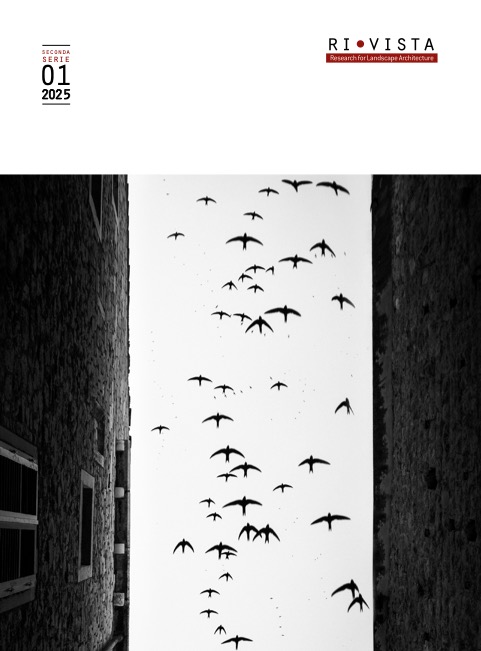The revelation of open space's mnemonic idioms. An investigation of mnemonic procedure and order
Published 2025-10-28
Keywords
- Memory as a time incision in open space,
- spolium,
- memory and objects,
- mnemotechnics,
- pragmata
How to Cite
Copyright (c) 2025 Konstantinos Gounaridis

This work is licensed under a Creative Commons Attribution 4.0 International License.
Abstract
The present is an attempt to emerge an interpretative order for open space based on mnemonic events and repurposed architectural fragments. Emphasizing the spatio-temporal qualities of objects and their interwoven existence within various contexts. Moving beyond traditional notions of structured wholes, it embraces a nuanced understanding of open space informed by architectural theory. A recall of philological, and other references beyond the field of practice have been incorporated, seeking opportunities of reading manifestations of time through memory incised in existing built forms of material presence. By reinterpreting mnemotechnics, the essay explores memory embedded within open space, enabling non-linear interpretations and revealing the unfolding of time. This mnemonic approach offers a resilient intellectual framework for understanding the evolving nature of open space and its significance for architectural practice.
References
- Adorno T.W. 1967, Functionalism Today, Plethron, Athens.
- Antonas A. 2020, The pulp of things, Antipodes, Athens.
- Aureli P.V. 2011, The Possibility of an Absolute Architecture, MIT Press, Cambridge, MA.
- Bartholomew H. 2019, Enstranged Strangers: OOO, the Uncanny, and the Gothic, «Open Philosophy», vol. 2, n. 1, pp. 357–383. DOI: https://doi.org/10.1515/opphil-2019-0027
- Boyer M.C. 2012, Collective memory under siege: The case of “heritage terrorism”, in C. Greig Crysler, S. Cairns, H. Heynen (eds.), The SAGE Handbook of Architectural Theory, SAGE Publications, Los Angeles–London–New Delhi–Singapore–Washington DC. DOI: https://doi.org/10.4135/9781446201756.n20
- Buchloh B. 1999, Gerhard Richter's "Atlas": The Anomic Archive, «October», vol. 88 (Spring), pp. 117–145, MIT Press, Cambridge, MA. DOI: https://doi.org/10.2307/779227
- Derrida J. 1995, Archive Fever: A Freudian Impression, Johns Hopkins University Press, Baltimore, MD. DOI: https://doi.org/10.7208/chicago/9780226851228.001.0001
- Doxiadis C.A. 1968, Ekistics: An Introduction to the Science of Human Settlements, Hutchinson, London.
- Friedel H. 2006, Gerhard Richter Atlas: Photography, Collages and Sketches 1962–2006, D.A.P./Distributed Art Publishers, New York.
- Marot S. 2003, Sub-Urbanism and the Art of Memory, Architectural Association Publications, London.
- Mitchell W.J.T. 1995, Narrative, Memory, and Slavery, in Id., Picture Theory: Essays on Verbal and Visual Representation, University of Chicago Press, Chicago–London, pp. 184–207.
- Perec G. 1975, W ou le souvenir d'enfance, Denoël, Paris.
- Ponty M. 1948, Exploration of the Perceived World: Sensible Objects, Causeries radio lecture series.
- Rossi A. 1982, The Architecture of the City, transl. by D. Ghirardo and J. Ockman, MIT Press, Cambridge, MA.
- Spieker S. 2008, The Big Archive: Art from Bureaucracy, MIT Press, Cambridge, MA.
- Spoerri D. 1994, An Anecdoted Topography of Chance, Atlas Press, London.
- Spuybroek L. 2011, The Sympathy of Things: Ruskin and the Ecology of Design, Bloomsbury, London. DOI: https://doi.org/10.5040/9781474243896
- Stewart S. 1993, On Longing: Narratives of the Miniature, the Gigantic, the Souvenir, the Collection, Johns Hopkins University Press, Baltimore, MD. DOI: https://doi.org/10.1515/9780822378563
- Yates F.A. 1966, The Art of Memory, Routledge & Kegan Paul, London.





